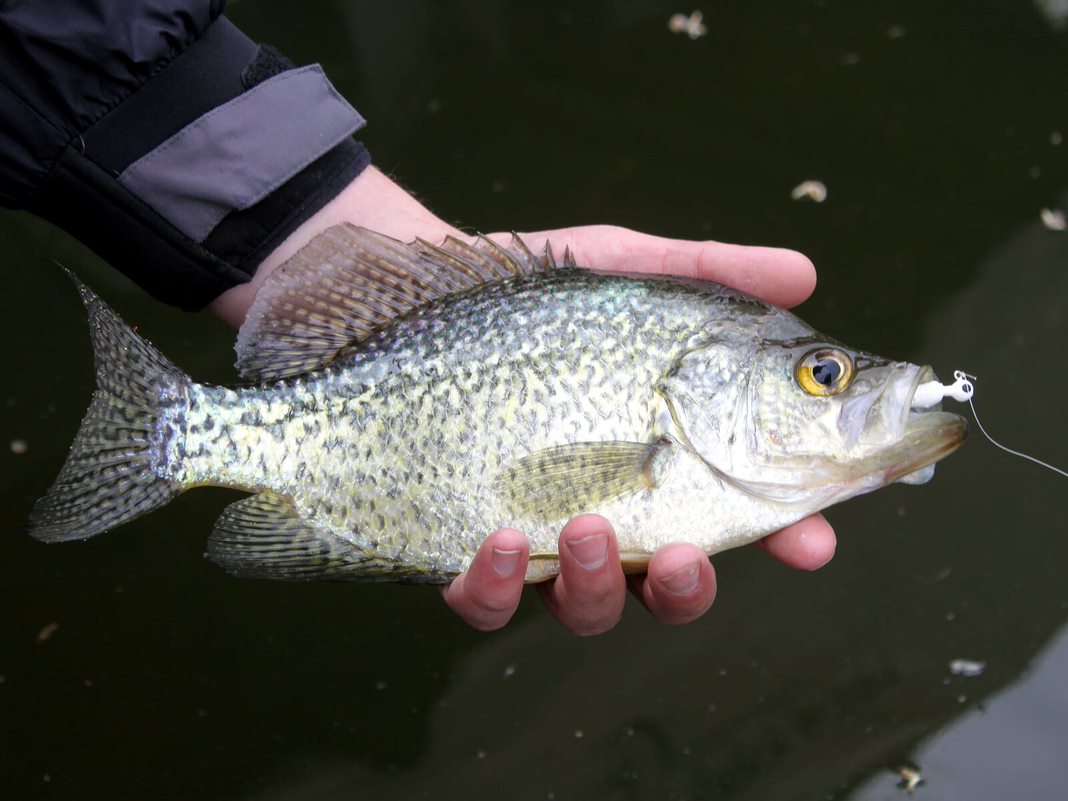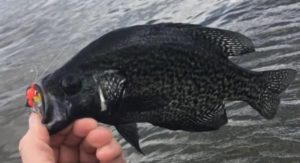
Simple tackle such as small ballhead jigs and two-inch tubes are a staple for catching springtime crappies. Have some in match-the-hatch baitfish colors, but also tote some bright ones with as well.
By Nick Simonson
One of the earliest fish available to anglers, even in the latest of springs, is the crappie. They’re ubiquitous, found on flows of all sorts from small farm ponds and mesotrophic rivers of the Dakota prairies, to the wandering chains of lakes in Minnesota. In the latter state, where pike and walleye fishing is bounded by dates on the calendar, crappies provide early access to long-rod angling after an extended winter. In the former, they may be available year round as locations like Nelson Lake kick out big slabs all winter thanks to a warm water discharge.
Wherever you seek these speckled panfish this spring when the ice finally gives way, one adage should be your guide: keep it simple. Crappies are the everyman of angling. They are bigger than bluegills to provide a tasty and rewarding meal, smaller and less touted than walleyes that draw the attention of many, and far easier to catch than muskies, that’s for sure. As a result, a light or medium-light jigging rod will get the job done when angling for them. Spool a smaller spinning reel with four-pound-test monofilament line, and the basis for the best possible crappie fishing is quickly in hand.
Even with our modern inflationary trends, crappie tackle remains the most affordable on the market and in the sporting good aisle. Twenty dollars will likely fill a tacklebox with the jigs, tubes, grubs and other smaller soft plastics to fuel a spring and summer’s worth of crappie fishing. Go-to offerings remain 1/16 ounce insert heads that slide neatly into any one of a variety of colored two-inch tubes, and some ballhead jigs that the plastics can simply be threaded onto. Add in a package or two of two-inch twister tails and perhaps a Beetle Spin or Road Runner jig option and a few krystal flash jigs and there’s not much else that’s needed to catch crappies, besides finding them.
Even that part of the equation isn’t hard to calculate. You may have noted in the last week or two, that despite the daytime temperatures still struggling to get above freezing that a good deal of melting still occurs from the heightened sun angle and increased strength from its more direct rays as the season shifts. The same phenomenon occurs once the ice is off of a water as well. Northern bays and inlets are the first portions of a water to warm up each spring, simply due to the fact that they receive the most radiation from the increasing sunlight every day. As a result, crappies make their springtime spawning movements toward these areas, as they are the warmest and most hospitable to their efforts. Focus on these spaces to find the biggest fish, and certainly the highest concentration of crappies. Make a note of it in your journal, or drop a waypoint on the GPS to come back year after year for fast spring action.

Other elements that impact spring crappie fishing often include the presence of dark bottoms and structure. In those darker bays, where perhaps muck and mud absorb and hold the radiant energy of the sun a bit better, things get warmer faster. Additionally, structure such as sunken trees, deadfalls leading out from shore into the water, early-placed docks, and emergent weeds and aquatic plants such as lily pad stands, pencil reeds, or flooded cattails, will hold crappies as they stage to spawn or begin their nest building process. With the use of polarized sunglasses, it’s easy to pick out the slow-moving fins and tails of crappies holding in these shallow spaces, and a well-placed cast of a tube should trigger a strike. In a shallow-drifting boat however, don’t get too close or those fish will spook and either retreat further into the vegetation or dash out into the depths.
Crappie fishing is one of the most fun adventures that spring can bring. The males are often dressed up in their deepest hues of the season, with some black crappies running so deep with ebony that much of the green and white in their scales has been replaced with their spawning shades. Even male white crappies take on a darker tone as their vertical bars blacken with the rush of spring-induced hormones. The bite can be fast and furious, and some of the biggest and best looking fish of the year can be caught as well. Keep things simple in terms of tackle and know where to start your quest for some of the most enjoyable openwater angling of the year…in our outdoors.
